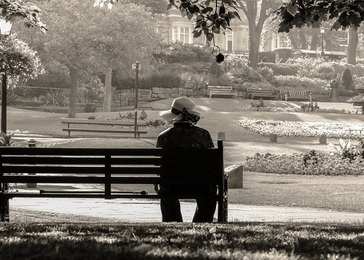 Author: Nataša Todorović (Social Inclusion Blog)
Author: Nataša Todorović (Social Inclusion Blog)
Population aging and urbanization are the two main trends of the 21st century. On the one hand, cities are growing, while on the other, the number of citizens over 60 is increasing. According to United Nations data, the share of those older than 60 in the population will double between 2006 and 2050 from 11% to 22%, and by then the number of those over 60 will be greater than the number of children under 14. At the same time, cities and megacities are growing and expanding rapidly. Since 2007, basically half the population of Earth lives in cities, and according to predictions by 2030 three out of five citizens are expected to live in cities. The same trend exists in our country as well. Most of the population lives in cities, villages are mostly elderly with small populations, and migration towards cities, particularly Belgrade, is marked.
In order to respond to the needs of an aging population it is necessary to, in addition to empowering villages, make sure we develop cities and communities adapted to the elderly, representing a logical response to the increase in the number of elderly on the one hand, and promotion of active aging on the other. Talk of this issue started when the World Health Organization developed a global project in 2006 titled Cities Adapted to the Elderly. The project united cities and communities worldwide interested in supporting healthy aging and becoming age sensitive or friendly towards the elderly. In order to correctly answer the question what would, in fact, the term cities adapted to the elderly mean, in these cities information was collected from the elderly, from caretakers and people interested in developing cities adapted to the elderly.
Such cities foster intergenerational solidarity, enable social relations and links between citizens of all ages. This enables, on the one hand, for the elderly to feel socially included, and on the other, for those elderly under risk of social isolation to be provided support and to reduce economic, language or cultural barriers to a minimum.
Cities adapted to the elderly have benefits for all ages, not only the elderly: cities with environments adapted to citizens of all ages and various capacities and abilities. Friendly cities are cities without barriers, with safe roads and infrastructure, designed for diversity, inclusive and cohesive. These are the cities of choice for all generations – excellent places for living, for family, and a place you want to grow old in. They enable people to remain active, connected and positively contribute to the economic, social and cultural life.
Such cities can prevent and delay disease occurring with age through providing support in the community and through preventive healthcare services, enabling the elderly to retain their health and independence as long as possible. (…)
The World Health Organization believes that Cities Adapted to the Elderly represent a place enabling people of all ages to actively participate in the life of the community. It is a place facilitating your staying connected to those around you and those you love. It is a place helping people remain healthy and active, even those of the most advanced age, and it is a place helping those who can no longer care for themselves to live with dignity. Many cities and communities worldwide have already taken active steps: a total of 210 communities worldwide. However, numerous barriers remain. Some of them are physical barriers, but many are the consequence of prejudice and thinking of aging and the way we see and treat the elderly as passive receivers, not active members of the community.
The text in its entirety can be read on the Social Inclusion Blog. The author wrote it in cooperation with dr Milutin Vračević from the Red Cross of Serbia, originally published in The Voice of Centres – Informational Newsletter of the Social Work Centres of Serbia (iss. 46, March 2015).
 Government of the Republic of Serbia
Government of the Republic of Serbia















 pdf [271 KB]
pdf [271 KB]
Leave a Comment